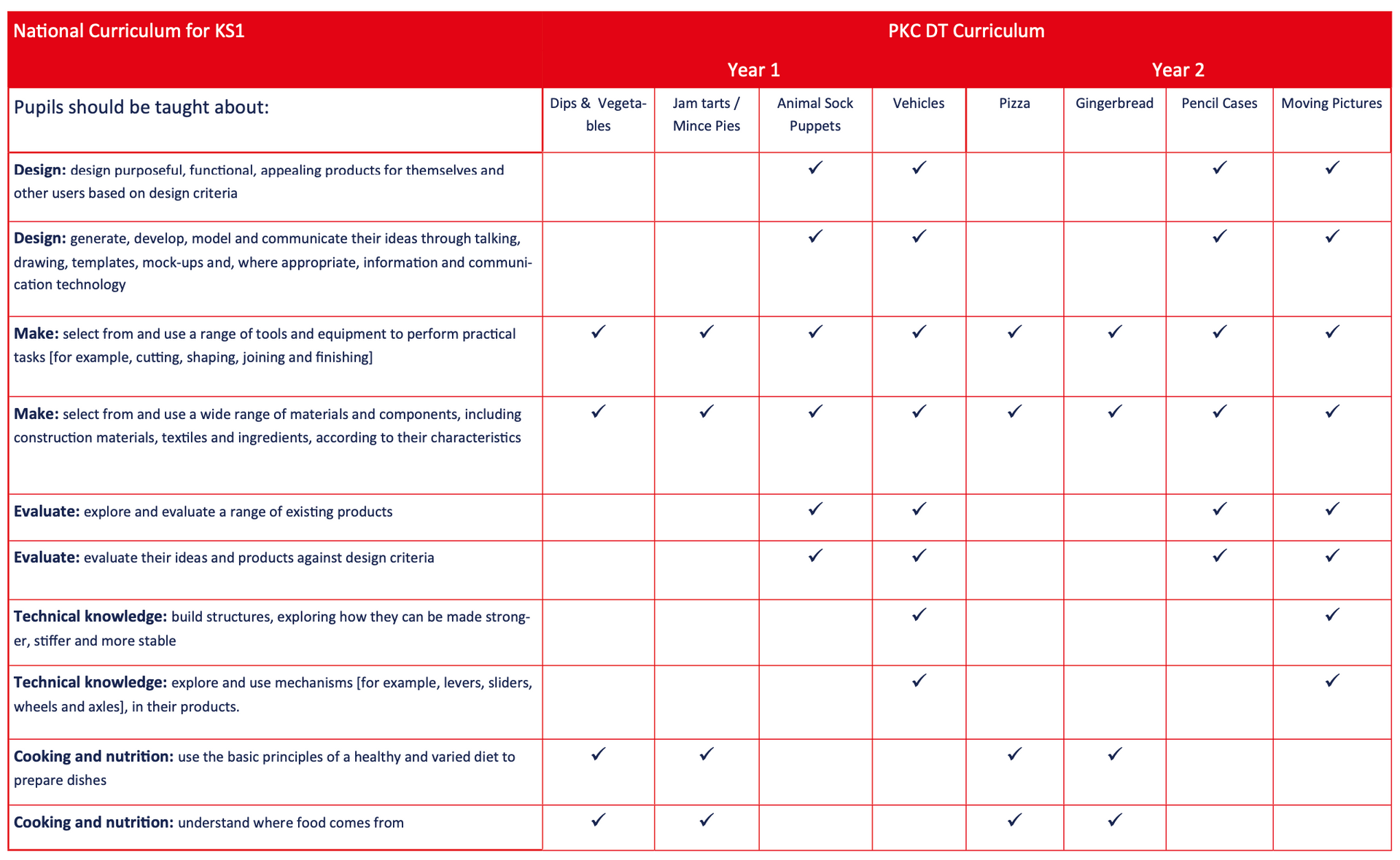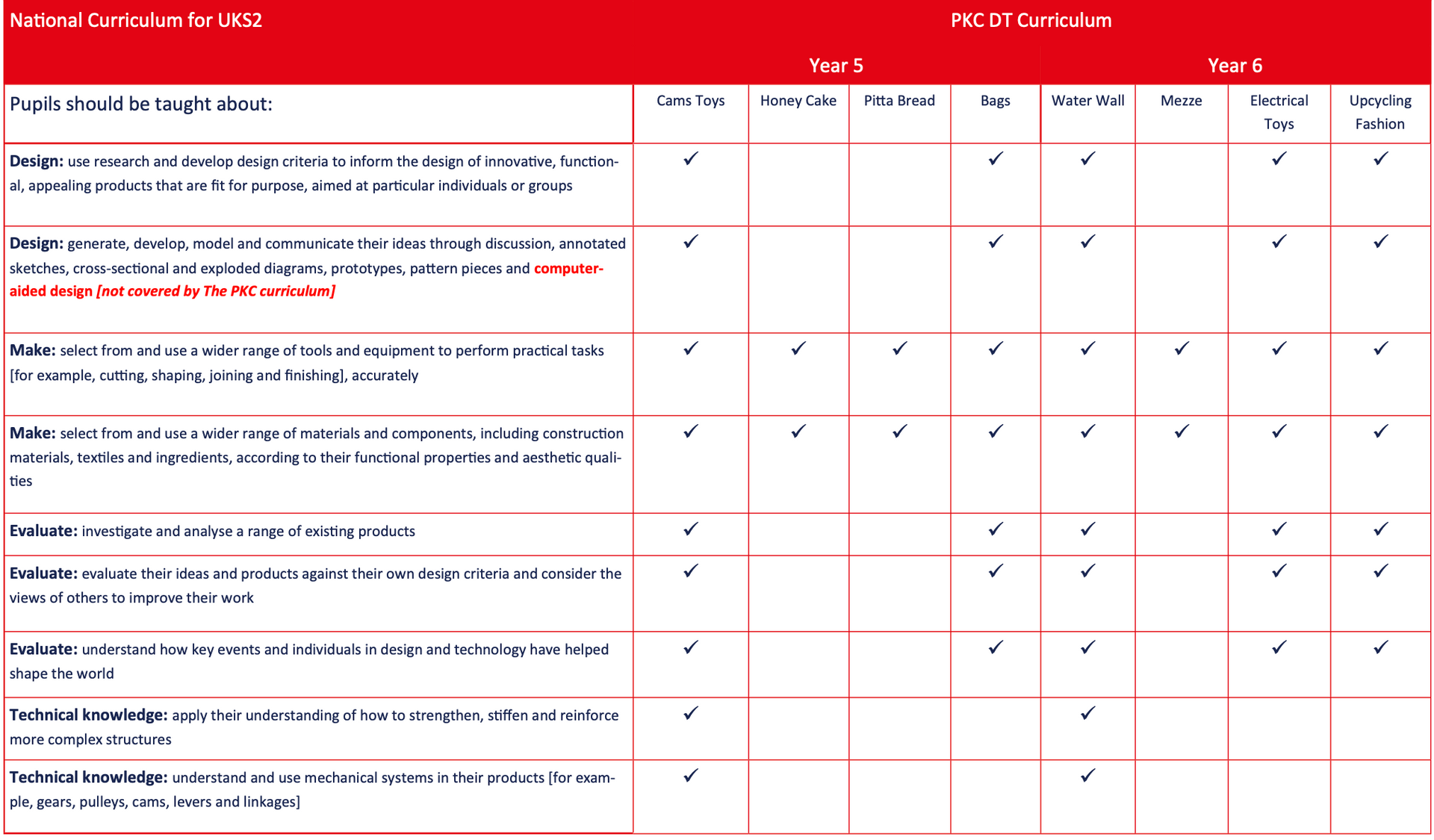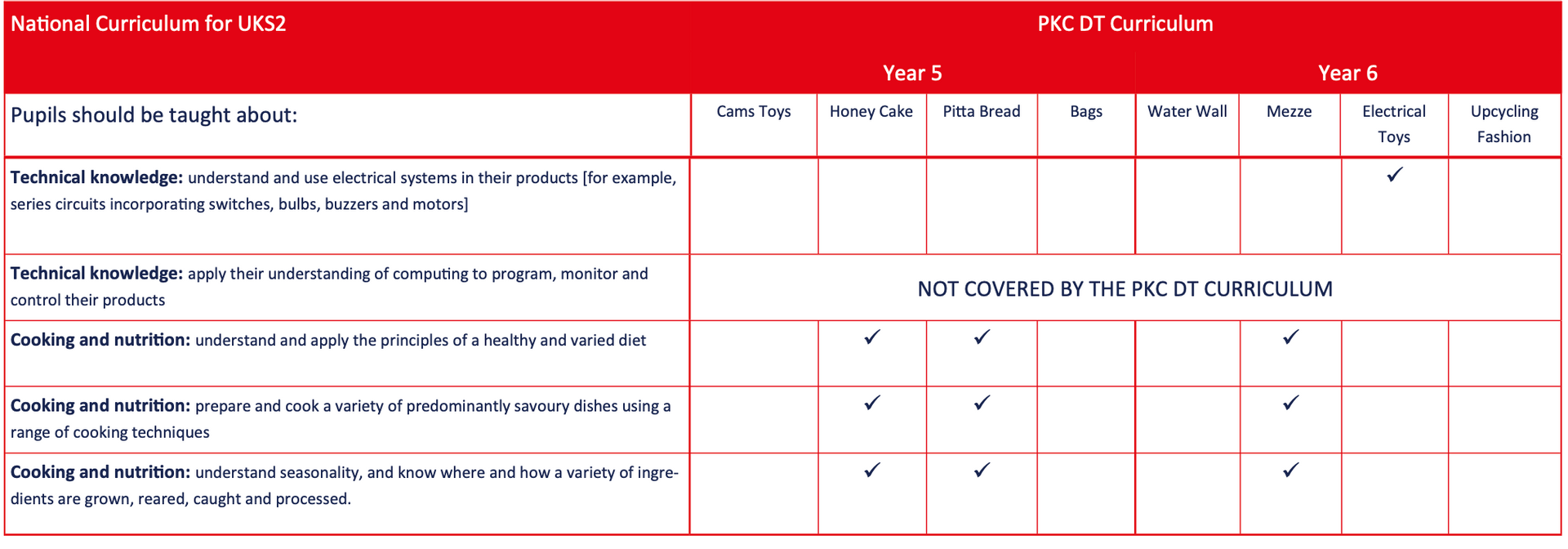
Design Technology
Rationale:
Wherever we look, evidence of design is all around us. From chairs to hospital equipment, from clothes to websites, from advertisements on the side of a bus to playground equipment, everything has been designed. This curriculum aims to inspire students to think about the important and integral role which design and the creation of designed products play in our society.
The curriculum is split into three different areas: ‘cook’, ‘sew’ and ‘build’. It is designed so that each year group will complete a unit of work in these three different areas once a year. Two different ‘aspects’ of design are interwoven into the three areas of study: the environment and sustainability, enterprise and innovation. These ‘aspects’ acknowledge enduring and contemporary concerns of modern design. Each unit specifies the concepts and skills which the students are expected to learn over the course of a unit. These concepts and skills progress gradually throughout the course of the six years of study.
In ‘cook’ children learn to cook from recipes which gradually build basic culinary skills, culminating in year six with the creation of a mezze-style meal requiring the pupils to produce various small dishes. Whilst studying these practical skills the children learn about concepts relating to food such as nutrition, seasonality, food production, transportation and food from different cultures. Each five hour block of work is split into two, two and a half-hour sessions. In each session the children cook from one recipe.
In ‘sew’ children practise using fabric and thread to learn basic sewing techniques to create objects which demonstrate embroidery, appliqué, weaving and plaiting. Concepts such as the properties and creation of different fabrics, fast fashion, industrialisation, waste, recycling and pollution are interwoven into these activities.
In ‘build’ children learn about the creation of structures and mechanical and electrical devices to create products such as cars, moving cards, toys and books. This culminates with year six learning to consider the user in real life, designing a water wall for children in reception. Once again, the practical process of designing and creating a product is interleaved with learning about concepts which have a bearing on what the students make. These concepts, for example force, motion and the properties of materials are often connected with those encountered in the science curriculum.
The sequence of lessons in the ‘sew’ and ‘build’ areas of study follow a structure to enable the students to become familiar with, understand and practise the process of design: research and investigate, design, make, use and evaluate. The planning for each unit of work specifies the product the children will make, the purpose and user of the product. This specification acknowledges the importance of purpose and user within the design process. Throughout the course of the lessons the children will explore existing products and their uses, generate ideas and designs by creating drawings and prototypes against criteria which they devise having considered purpose, function and appeal. Evaluation against these criteria concludes the process. Discussion is an important part of this process, as is consideration of the properties of potential materials and the choice of tools. Learning about fundamental concepts, skills, developments in history and understanding of the influence of key individuals in the field are interleaved into this process-driven structure. The children's understanding of key skills and concepts builds from year to year, assessing and cementing prior learning, and therefore the implementation of the curriculum in the given sequence is crucial.
The curriculum is designed to be delivered alongside the PKC art, science and history curricula, as parts of it directly relate to areas of knowledge which the children acquire in these subjects. Where a unit looks at concepts which are also addressed in these subjects, the design and technology unit is generally taught after units in these other disciplines. This allows the children to approach their study of design and technology with a degree of confidence and ‘expertise’ and to consolidate their knowledge by creating connections between the different disciplines. It should be noted that the curriculum does not include the study of digital programming and computer aided design as these elements of design and technology, as specified in the National Curriculum, are covered in the computing curriculum.
Our children's learning will be completed in workbooks. These will be viewed as working documents which evidence the design process and may include notes, annotated photographs, drawings, diagrams and photographs of prototypes and finished work, as well as children’s evaluation of the projects which they undertake. This will ensure that teachers and children alike can easily identify progression in knowledge, process and application of skills.
It is recognised that the procurement and management of resources is a large part of delivering a design and technology curriculum. Every effort has been made to provide for activities which use economic or recycled resources. In addition, the sequence of units ensures that only two year-groups at a time are using the same set of resources so that the purchase of equipment is kept to a minimum.
In order to emphasise the importance of the user/consumer in the process of design there is provision each term for children to take part in an event to celebrate what they have made. This also creates the opportunity for children across different year groups to work together. At the end of the Autumn term a festive winter bake sale will be planned. At the end of the Spring and Summer terms a lunch for governors and fashion show will be organised.
Implementation:








Impact:
Our design and technology curriculum is high quality, knowledge-based, well-sequenced and is planned to demonstrate progression. If our pupils have understood and retained knowledge from the carefully sequenced curriculum we have taught, we know that they are where they should be.
At Holme C of E Primary Academy we ensure that children are equipped with DT skills and knowledge that will enable them to be ready for the curriculum at Key Stage 3 and for life as an adult in the wider world.
We want the children to have thoroughly enjoyed learning about design technology, therefore encouraging them to undertake new life experiences now and in the future.
